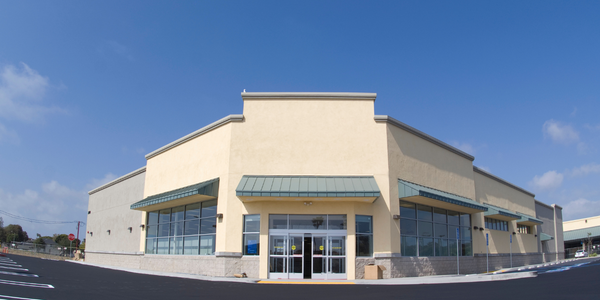适用行业
- 服装
适用功能
- 人力资源
用例
- 现场人员安全管理
- 时间敏感网络
关于客户
National Safety Apparel 成立于 1935 年,是一家家族式防护服制造商,致力于打造优质的安全产品。该公司为美国公用事业、制造业和钢铁工人以及美国武装部队提供服务。作为行业领先制造商,NSA 一直需要合格的人才来维持其运营。该公司正在寻找一种解决方案,以帮助他们简化招聘流程,减少招聘时间和成本,并提高招聘团队的整体效率。
挑战
National Safety Apparel (NSA) 是一家领先的工业环境防护服制造商,该公司正努力应对维持俄亥俄州工厂充足员工水平的挑战。该公司迫切需要一种招聘解决方案,帮助他们快速找到、评估和聘用合格人才。主要挑战是避免求助于昂贵的人事代理机构,同时确保工厂拥有足够的人力。该公司正在寻找一种解决方案,可以简化招聘流程,减少招聘时间,并提高招聘团队的整体效率。
解决方案
NSA 在 AllyO 中找到了解决方案,这是一款招聘自动化工具,因其易于实施和成本效益而脱颖而出。 AllyO 的系统旨在捕获、筛选和安排对潜在候选人的面试,从而使招聘人员能够专注于面试和雇用最佳候选人,而不会被耗时的任务所困扰。这对于招聘量大的行业尤其有利,因为节省大量招聘人员时间可能会产生战略差异。 AllyO 的对话式人工智能使候选人的筛选过程变得快速、无缝,导致很大比例的候选人决定继续前进并自行安排面试。
运营影响
数量效益

Case Study missing?
Start adding your own!
Register with your work email and create a new case study profile for your business.
相关案例.

Case Study
Fire Alarm System and Remote Monitoring Sytem
Fire alarm systems are essential in providing an early warning in the event of fire. They help to save lives and protect property whilst also fulfilling the needs of insurance companies and government departments.Fire alarm systems typically consist of several inter-linked components, such as smoke detectors, heat detector, carbon monoxide, manual call points, sounders, alarm and buzzer. The fire alarm system should give immediate information in order to prevent the fire spread and protect live and property.To get maximum protection a shoe manufacturer in Indonesia opted for a new fire alarm system to monitor 13 production sites spread over 160 hectars. Although the company had an existing fire alarm system, it could not be monitored remotely.It was essential that the new system would be able to be monitored from a central control room. It needed to be able to connect to the existing smoke detector and manual call point. Information should be easily collected and passed on to the Supervisory Control and Data Acquisition (SCADA) system. Furthermore, the system should have several features such as alarm management, auto reporting, being connected to many client computers without additional cost, and run 24/7 without fails. The company also needed a system which could be implemented without changing the architecture of the existing fire alarm system.

Case Study
IoT Applications and Upgrades in Textile Plant
At any given time, the textile company’s manufacturing facility has up to 2,000 textile carts in use. These carts are pushed from room to room, carrying materials or semi-finished products. Previously, a paper with a hand-written description was attached to each cart. This traditional method of processing made product tracking extremely difficult. Additionally, making sure that every cart of materials or semi-finished products went to its correct processing work station was also a problem. Therefore, the company desired an intelligent solution for tracking assets at their factories. They also wanted a solution that would help them collect process data so they could improve their manufacturing efficiency.

Case Study
Retailer Uses RFID Scanner to Improve Efficiency
Patrizia Pepe wished to improve the logistics of their warehouse: accepting incoming goods from their production sites, movement of items throughout
the warehouse, and packaging of goods for distribution to the retail locations. They initially tried to use barcodes for this function. Because barcodes must be individually scanned within a line-of-sight, the acceptance of goods coming into the warehouse was too time consuming. Working with the University of Florence, Patrizia Pepe instituted a five-month pilot project beginning in August of 2009 to test the validity of an RFID solution. The pilot involved tagging of about 60,000 items for the second seasonal collection, and convinced the company to move forward with tagging all items.

Case Study
Monitoring and Controlling Automatic Mixing and Dispensing Machines
As technology advances, textile manufacturing has been transformed from a labor-intensive to a partially or fully automated industry. Automation is significant in all segments of textile production - from spinning to printing, and textile machinery manufacturers are constantly searching for new technologies and automation processes will increase the productivity of their machines. The color paste mixing and dispensing machine is an essential part of the printing and dyeing process. With the advantage of automatically computerized controls and database management, the system can significantly improve its dispensing precision, working efficiency and production quality as well as reducing material consumption.





